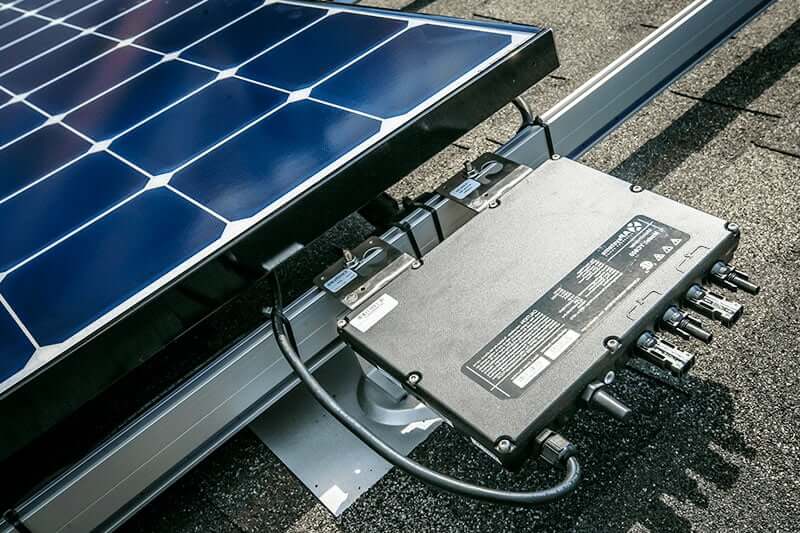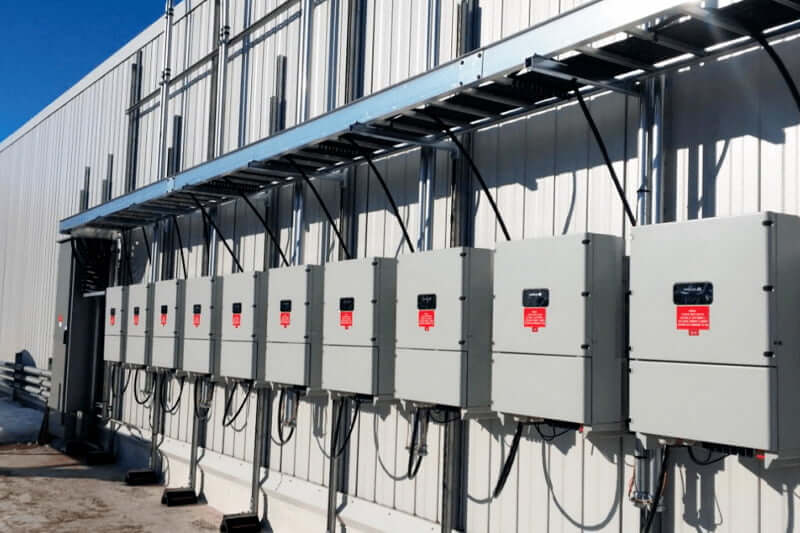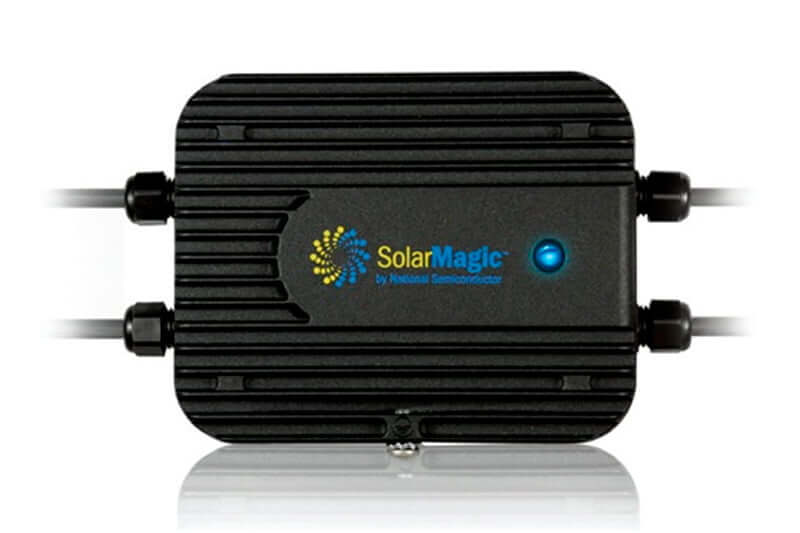Home Solar Inverters How Much Do Microinverters Cost?
How Much Do Micro Inverters Cost?
Microinverters are utilised in solar panel installations that occasionally get shaded. They’re attached straight onto every individual solar panel and aren’t sold separately. To determine their cost, the best approach is to compare the cost per kilowatt of a typical inverter to the cost of microinverters for a similarly sized solar panel system.
The price of micro inverters is $1.15 per Watt as compared to $0.75 per watt for central inverters. You can use a power optimizer instead of a micro-inverter which does the same thing and costs about $1.00 per Watt.
Most panel manufacturers sell panels with micro-inverters. The market leaders for power optimizers are SolarEdge and Tigo.
Table of Contents
ToggleString vs micro inverter cost per Watt
| String inverter | Micro inverter | Power optimizer | |
|---|---|---|---|
| Cost per Watt | $0.75 | $1.15 | $1.00 |
| Cost per KiloWatt | $750 | $1,150 | $1,000 |
| 4 kW system | $3,000 | $4,600 | $4,000 |
| 5kW system | $3,750 | $5,750 | $5,000 |
| 6kW system | $4,500 | $6,900 | $6,000 |
| 10kw system | $7,500 | $11,500 | $10,000 |
Benefits of micro-inverters
Micro inverters basically have one sole purpose, to split your system up into single cells so the whole system is not affected by partial shading.
A central or string inverter means all solar panels are linked together in one big circuit. If there is a break in the circuit, the whole system is knocked offline.
A minor inverter solves this problem by each panel having its own inverter, which means each panel works independently of each other. So if 2 panels are shaded on a 20-panel system, the production of power only drops 10% rather than by 100%.
Do Power optimizers do the same thing?
Yes. The difference is they still send the power down to a central inverter to convert power from DC to AC. Still, they essentially break your system into independent pieces like the microinverters do, protecting your system from partial shading. These turn your DC solar panels into AC solar panels to use directly.
Are they worth the extra money?
If you have partial shading from trees or other obstructions between the main power harvesting times of 10 am and 3 pm, then they are essential. If you do not have shading issues then you can give them a miss.
What Is A Solar Microinverter
Solar panels produce Direct Current electricity. This type of electricity is not suitable to power your home appliances. To use the power produced, it is converted to Alternating Current electricity by an inverter. An inverter converts the power produced by the solar panel system.
A microinverter is a miniature inverter that converts DC power to AC power for individual solar panels in your system.
It is installed under every solar panel in the system. Thus, if you install a 10kW solar system in your home, you will need 27 solar panels. You will also need 27 microinverters for every solar panel in the system.

Types Of Solar Inverters
String Inverters
String inverters are inverters connected to a series of solar panels and convert to AC electricity the power produced by the whole solar panel system. String inverters cost $1000 to $2,000.

Optimizers
Optimizers are devices that are installed to enhance the production of electricity by solar panels. They are only inserted in the solar panels producing below their expected capacity to enhance their production. They are a cheaper option as they don’t have to be inserted into all solar panels.

Hybrid Inverter
A hybrid inverter is an inverter used in a hybrid system that includes both a solar and a battery system. When used, a solar system with a hybrid inverter does not need a battery.
Battery Inverter
Battery inverters are used with solar batteries. When solar power is stored in a battery, the battery inverter converts the low DC voltage from the battery to AC power that is used to power home appliances.
What You Need To Know About Microinverters
Highly Efficient
All solar inverters have a range of temperatures that work best. A microinverter has a large range from -40 to 85 degrees Celsius. This is a large range that ensures that your solar microinverters work at all times.
The temperature at which solar microinverters work is important since they are installed under the solar panels. At this large range of temperatures, they ensure that your solar panels produce power as required.
Little Maintenance Required
Solar microinverters are long-lasting and require little to no maintenance during their lifetime. If you have high-quality solar panels, both can live out their full life without having to call your installers for a replacement or a fault.
Microinverters Make Your Panels More Efficient
Solar inverters are installed in individual solar panels. Thus, a fault in a single panel will not affect the output of the whole solar system. Microinverters ensure that your solar panels maximize the amount of power they produce which is then converted to usable AC power.
Used With AC Batteries
The majority of solar batteries in the market are DC coupled. Thus, inverters are not compatible with most solar batteries. Inverters can only be used with AC batteries. AC batteries do not store power. You cannot use them in an off-grid home.
Cost
Solar microinverters cost 20% of your total solar installation project. Depending on the nature of your solar system installation project, you may need to install microinverters to ensure that your panels are working effectively.
FAQ's
Inverters convert the DC power produced by entire solar panel systems and convert it into AC power. AC power can power lights and home appliances. One conventional inverter is all that is needed in this process.
When you use a microinverter, you will have to install it in every solar panel in the system. Each solar panel in your system will produce high AC power that is fed into the electrical panel of your home to power your appliances.
If a single panel is faulty, it will not affect the production of the other panels in the system.
Yes. When you use microinverters, your solar panels are more efficient than when you use string inverters. With string inverters, your solar system is as good as the least efficient solar panel. Thus, the lowest producing solar panel becomes the production of your solar power system
Microinverters are installed in individual solar panels in the system. Thus, the power produced by each panel is pushed to your electrical panel as it is produced. It ensures that the solar panels work even when there is shading to its capability to work in a large temperature range.
Solar microinverters are designed to last as long as your solar system. Popular microinverters in the market have a lifespan of 20 years. Solar microinverters will work as long as your solar panels are working. If you have solar panels with a 20-year lifespan and micro-inverters installed at the same time, they will work together for as long as the efficiency of the solar panels is at optimum levels.
No. Solar micro inverters are an optional value add to your solar system. They will increase your budget by up to 20%. You can install them if they are legally recommended in your location.
However, microinverters make your solar panels more efficient. Rather than getting all your power from the combined effort of your solar panel system, you can get it from each solar panel. This enhances the productivity of your solar system.
Compare Solar Panel Quotes
Table of Contents
Toggle









